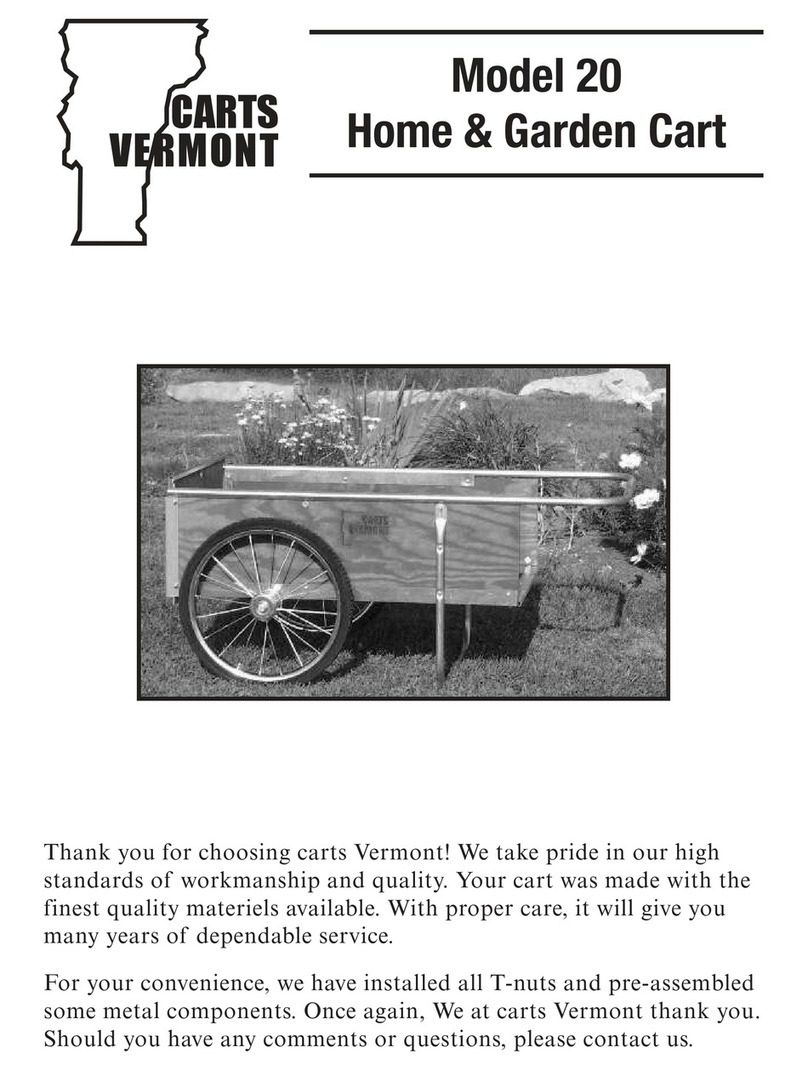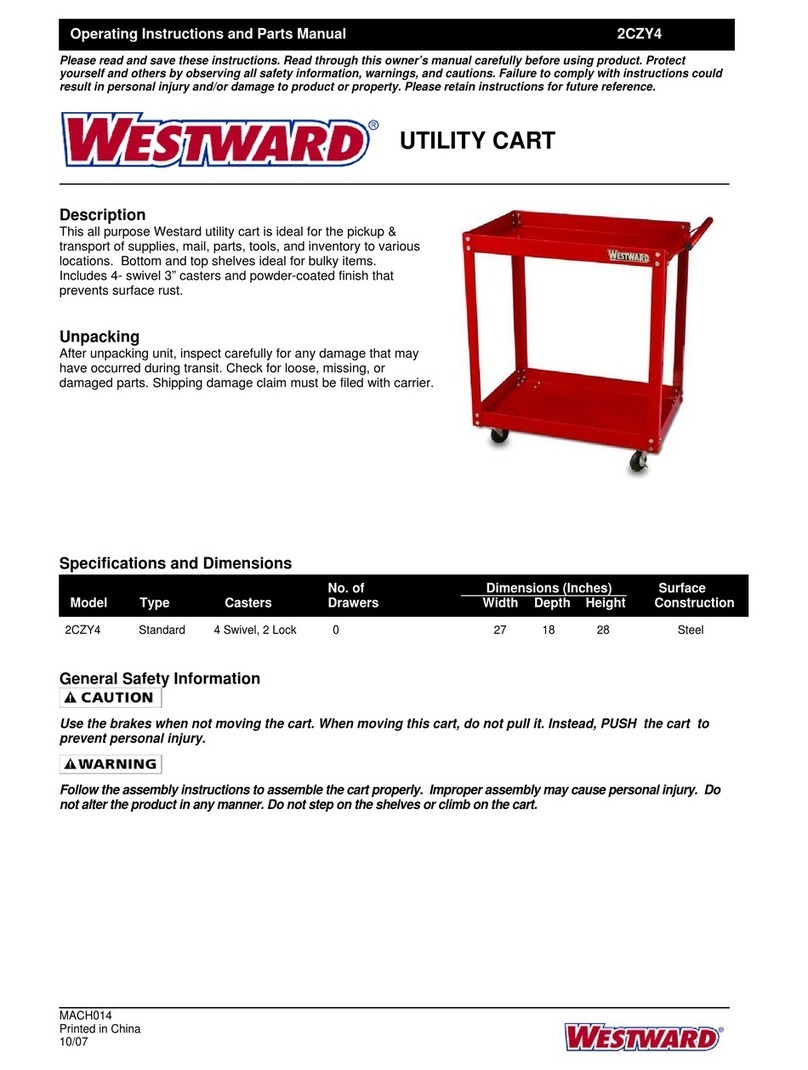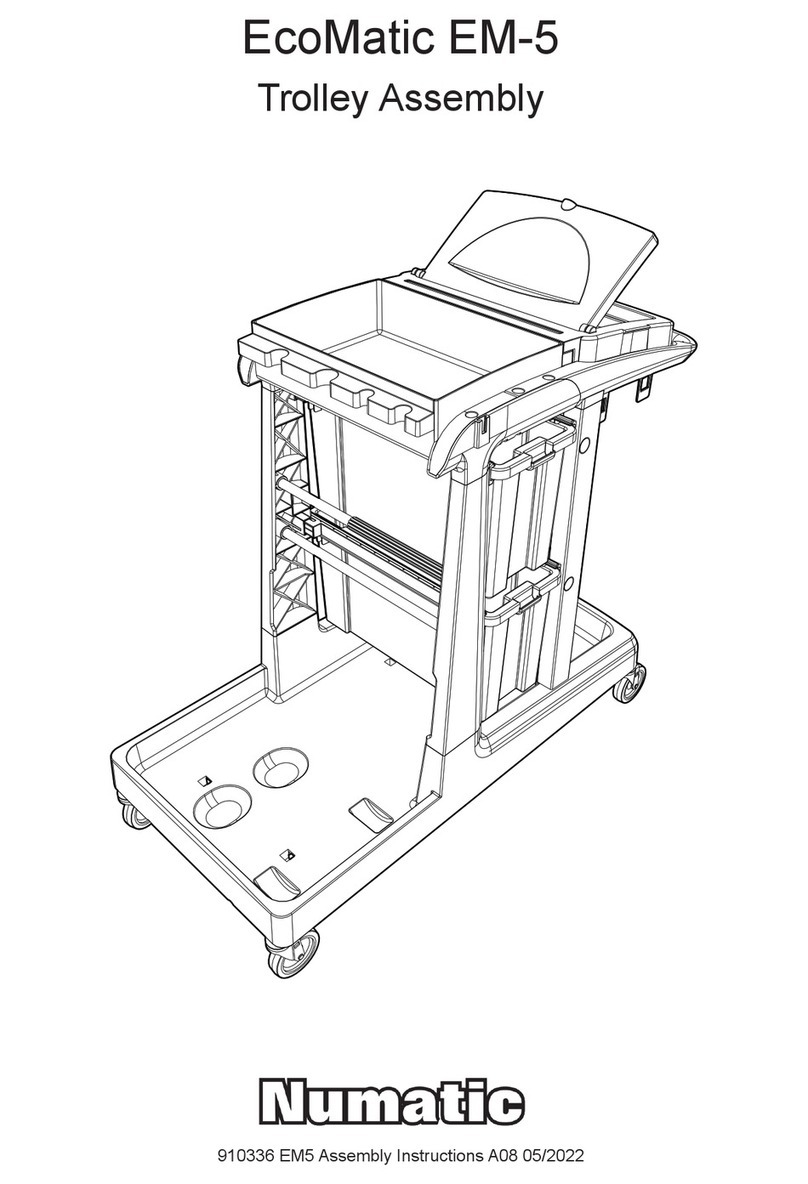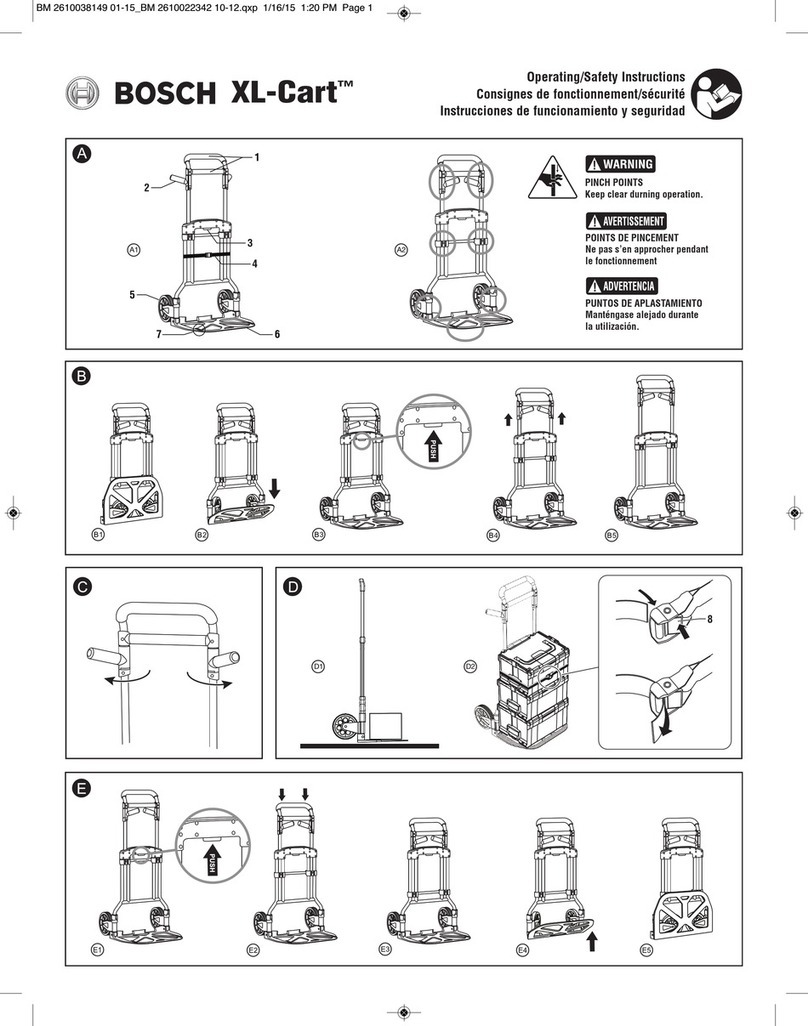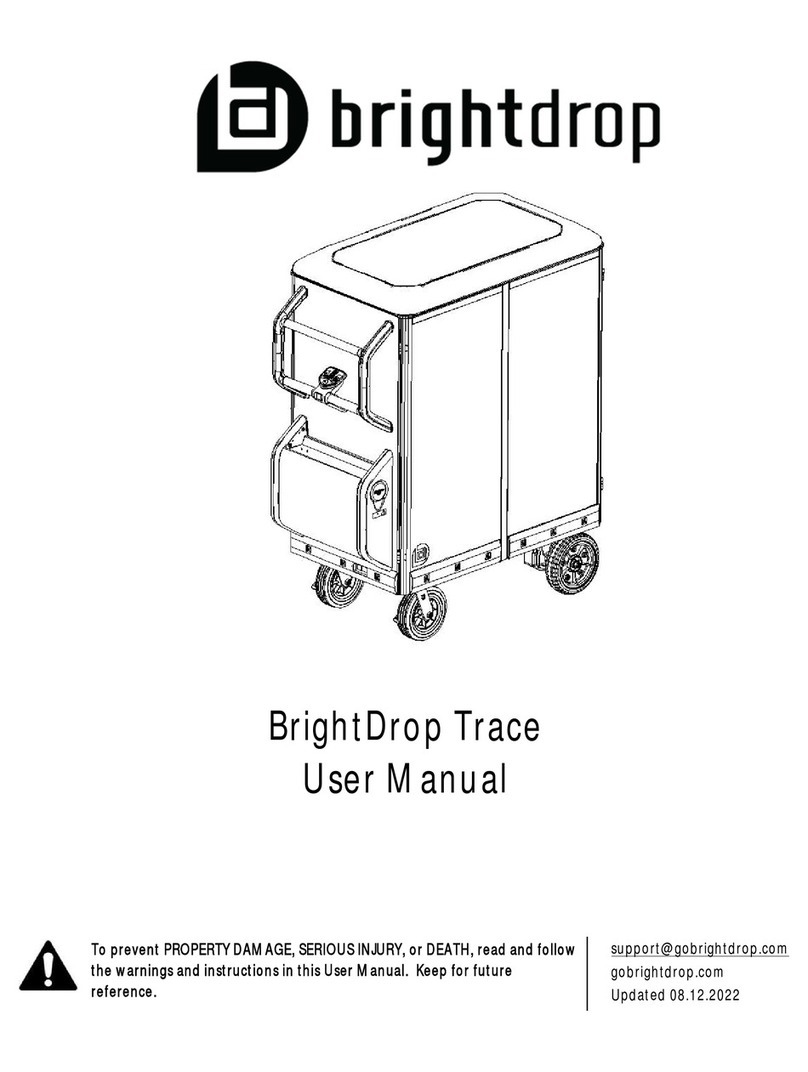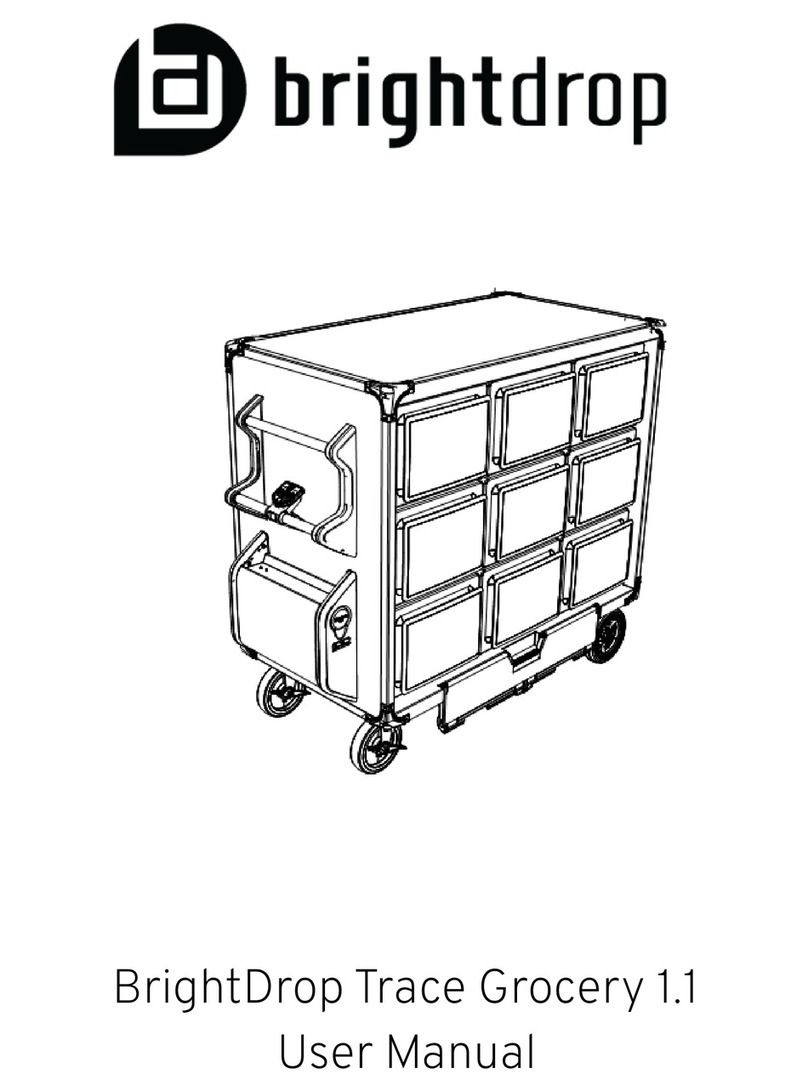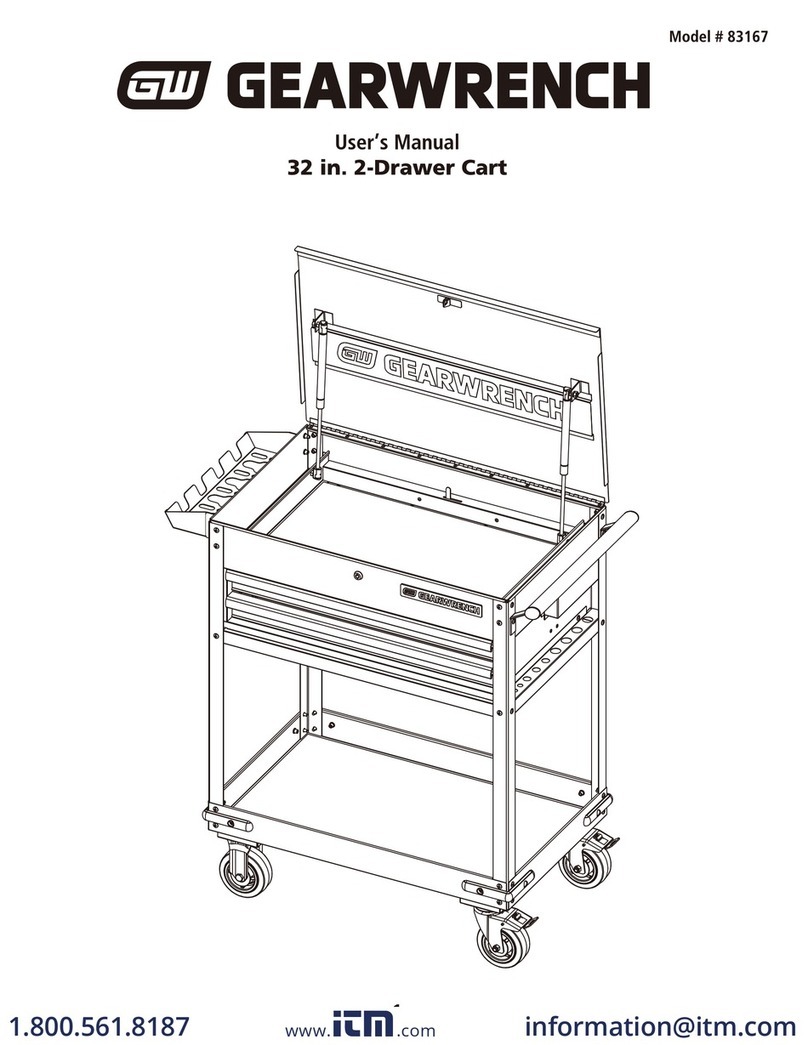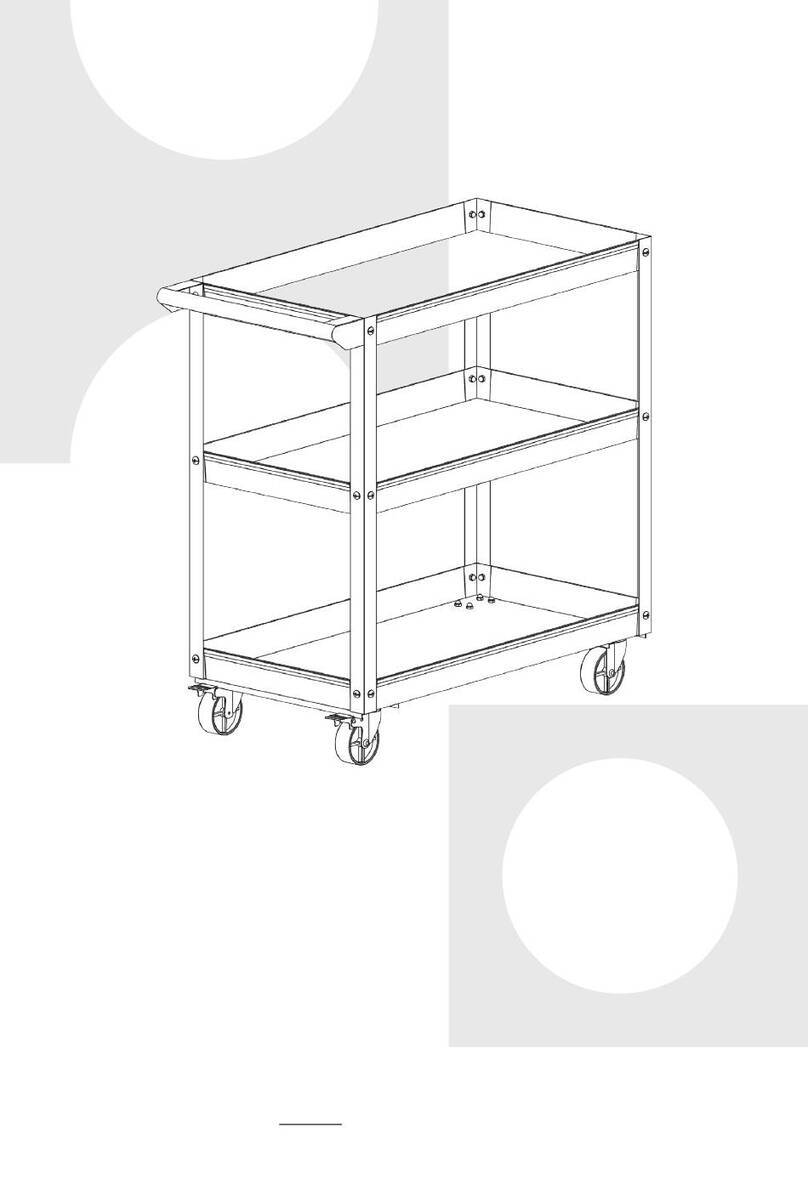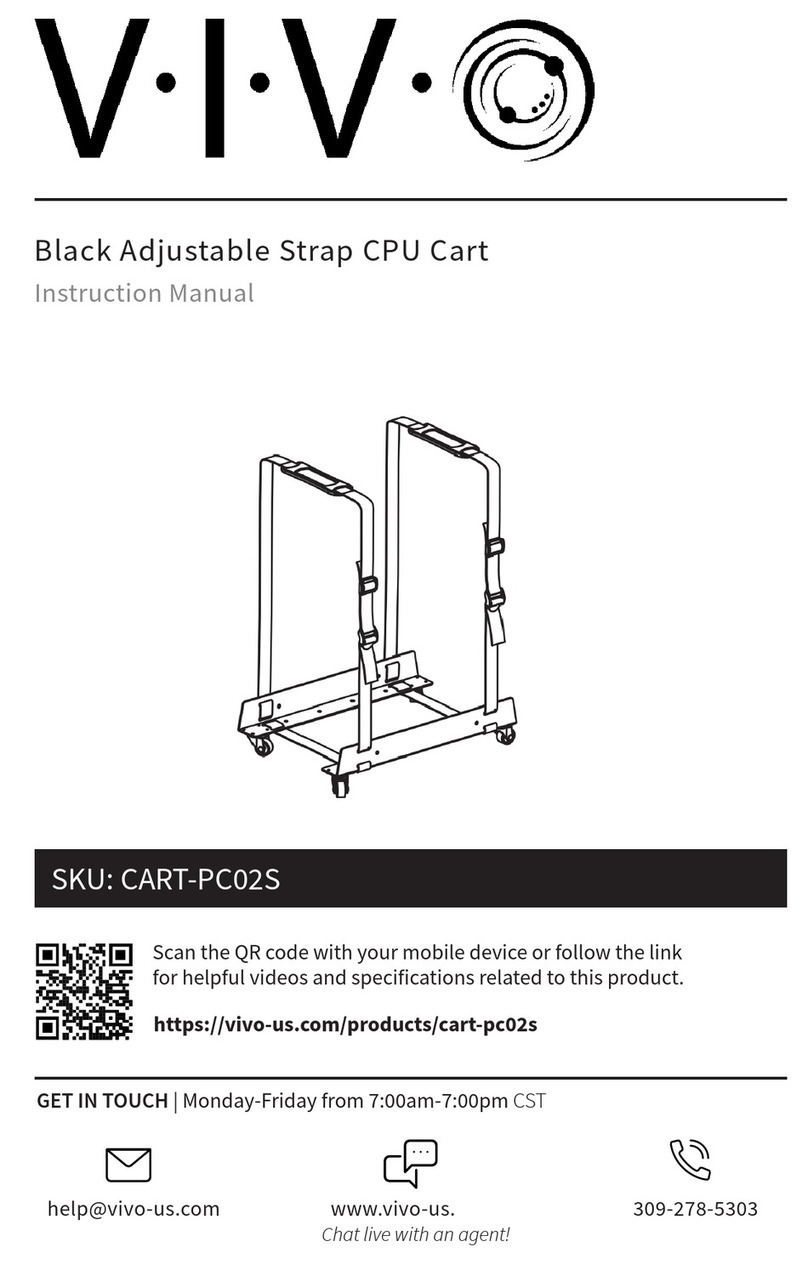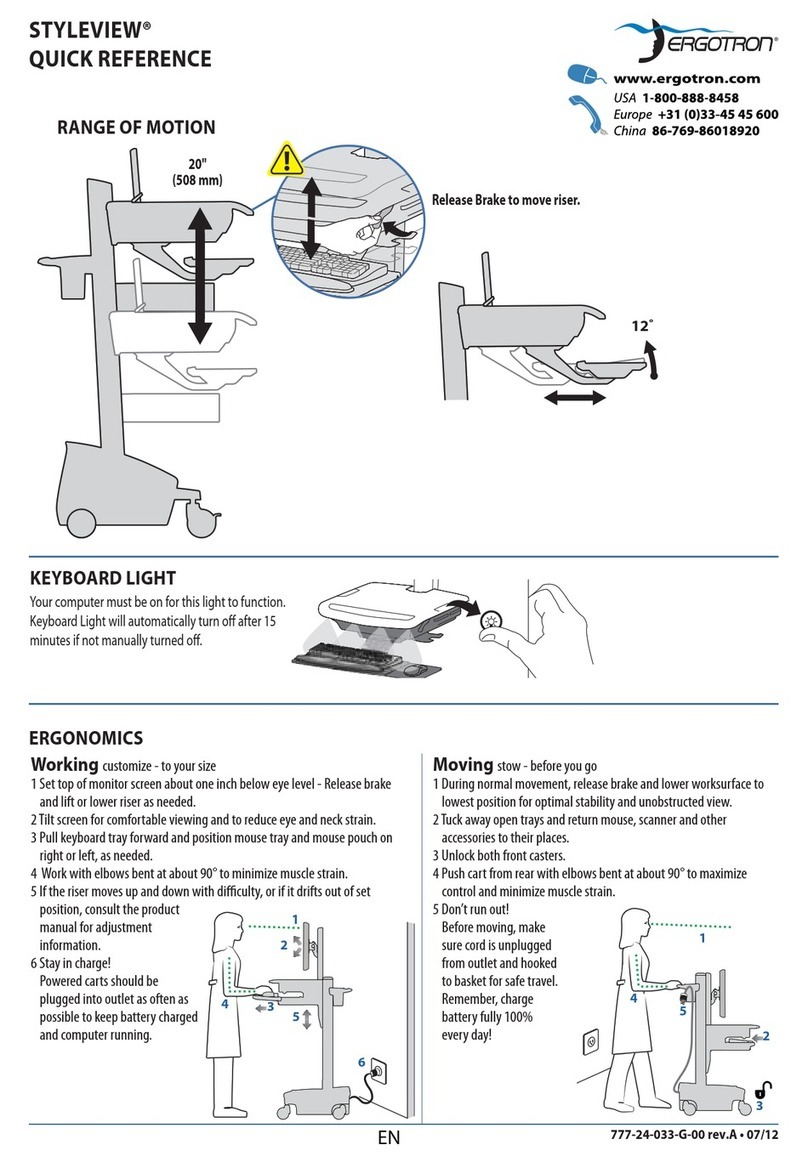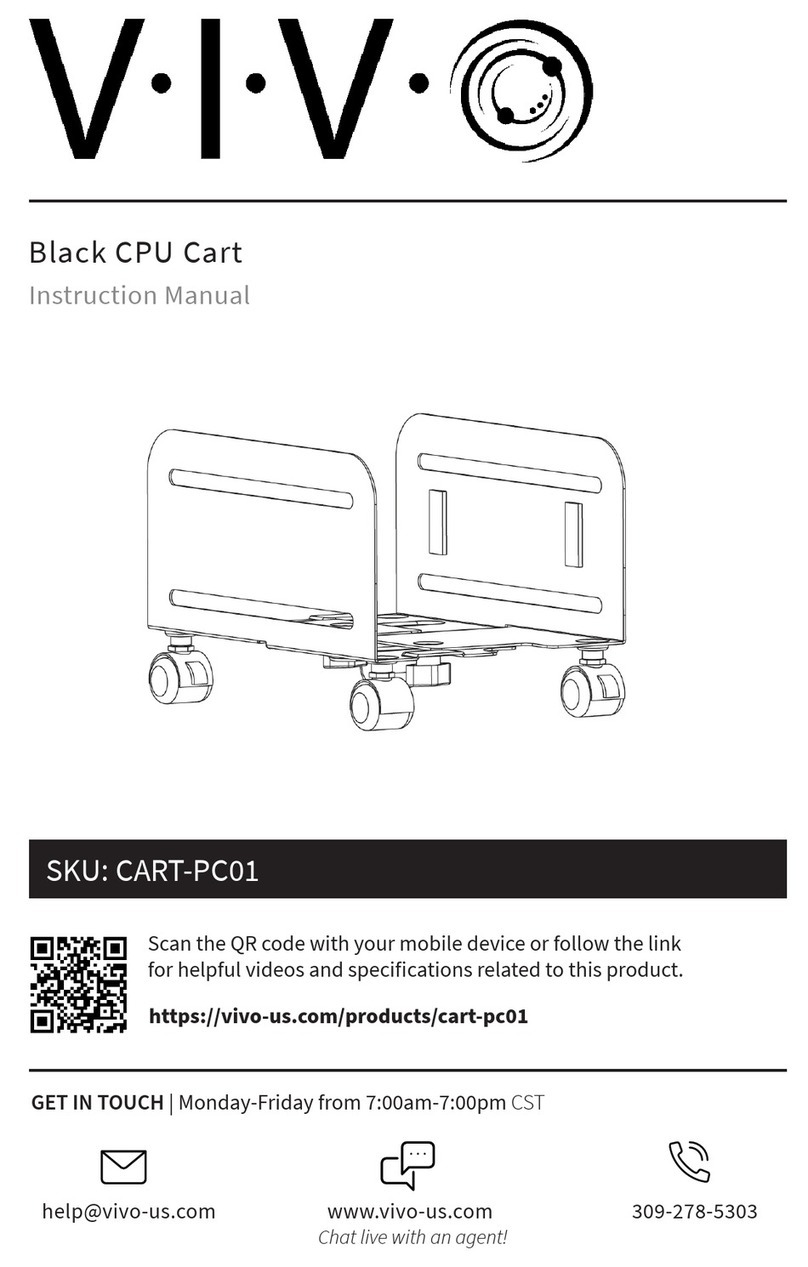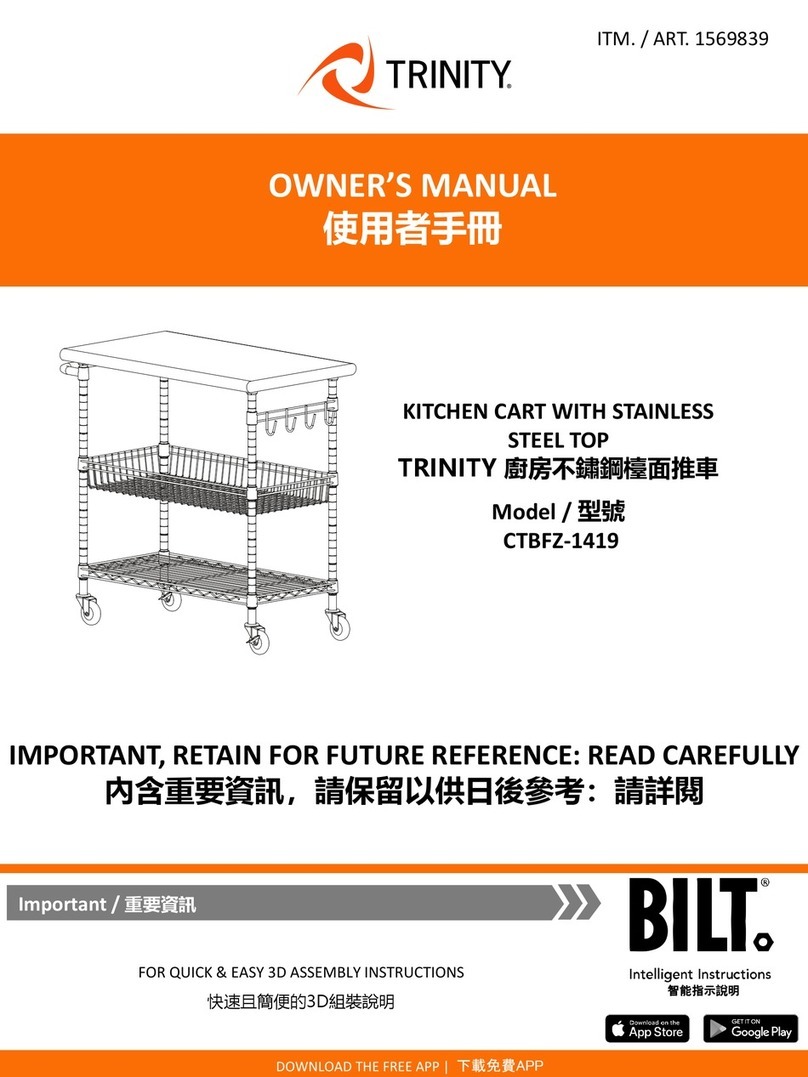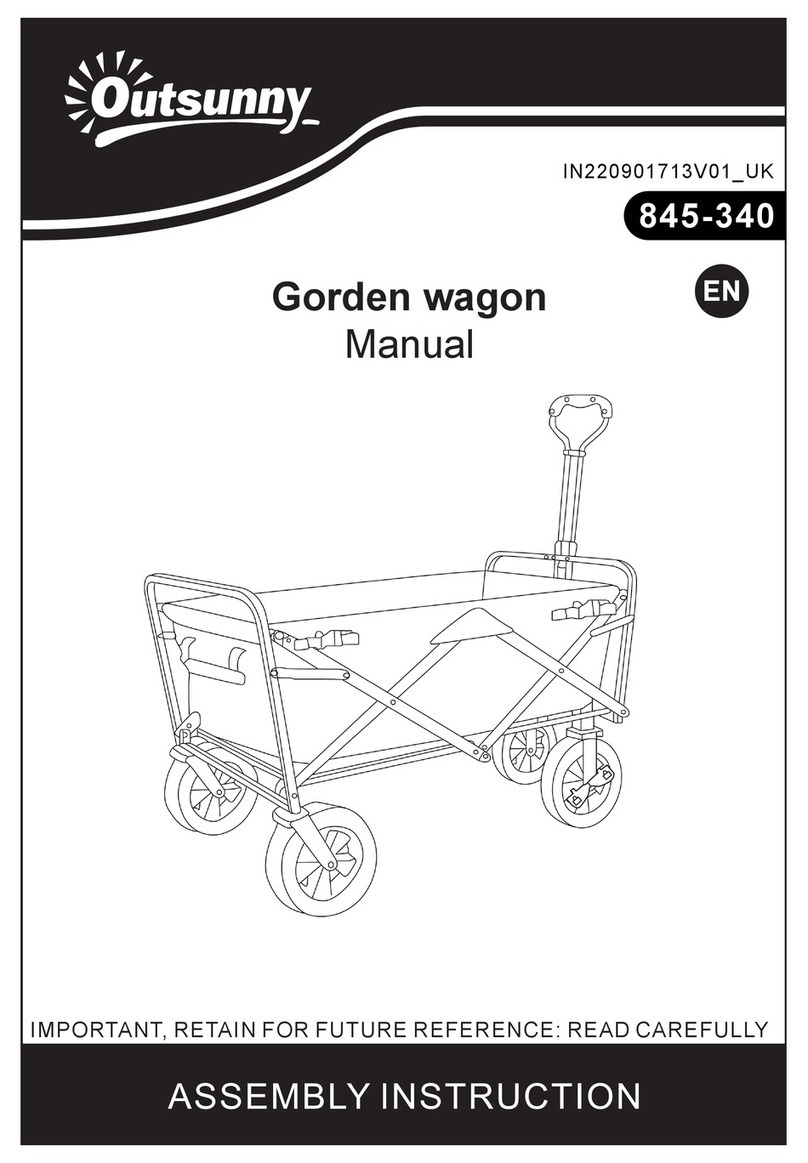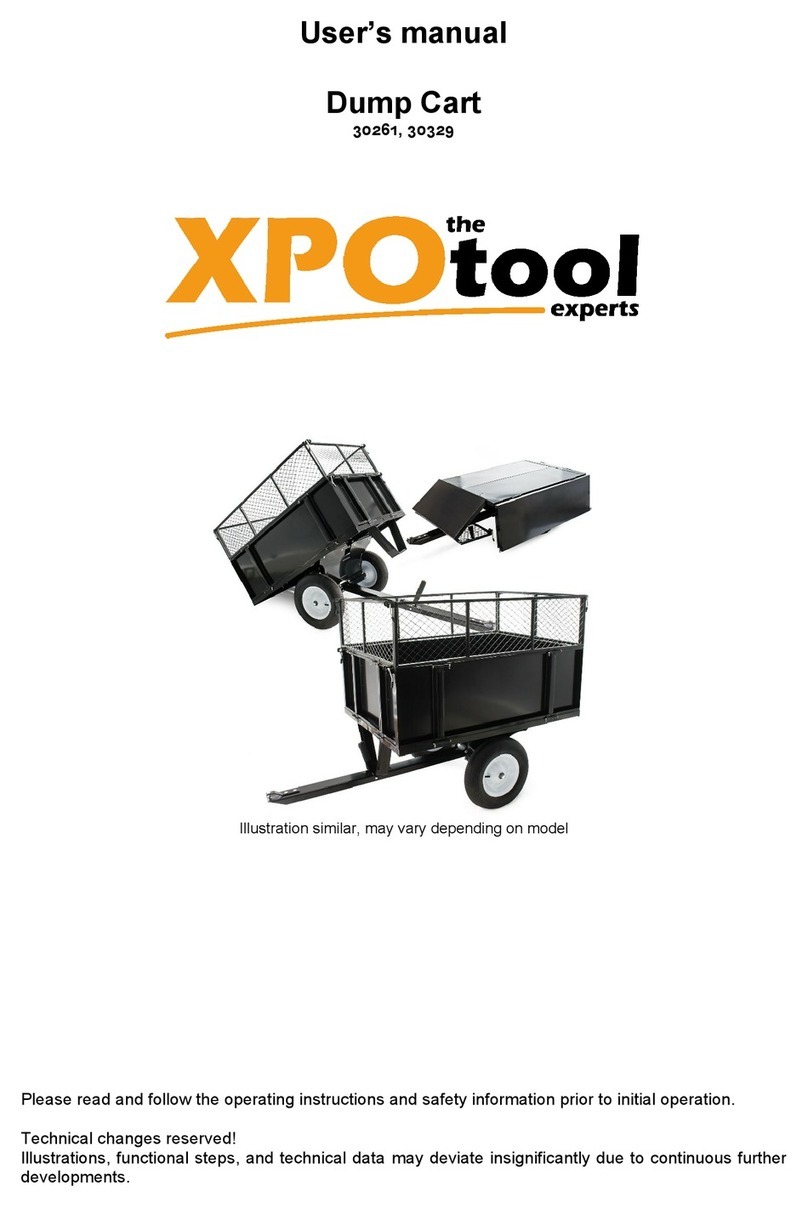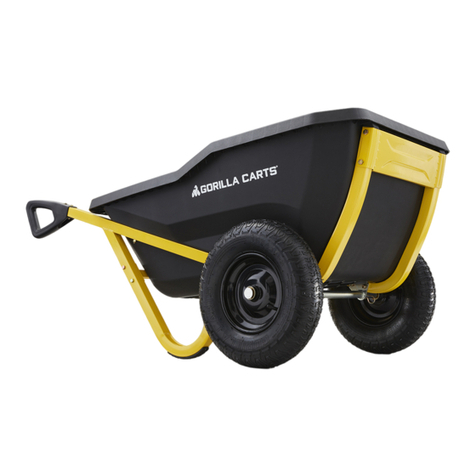
5
•ONLY travel the Trace on paved or smooth level surfaces free of hazards. DONOT use on
gravel, dirt, bumps, potholes, or other areas that do not have a finished surface like a
sidewalk, to prevent damage to the Trace or tipping over.
•ONLY operate in environments with adequate ambient light. Operating outside at night or in
areas with low light comes with more risksthan operating during the day due to decreased
visibility.
•Others may havedifficulty seeing you and youmay not see obstacles in your path.
•DO NOT maneuver the Trace through standing water, heavy rain, or in areas with other
obstacles. Be aware of areas with uneven floors, stairs, or other obstacles present. DO NOT
park the Trace in standing water.
•When pushing/pulling the Trace up/down an inclined grade/ramp (under heavy load
conditions up to 200lbs. and/or steep inclines greater than 5 degrees/8.7% grade) be aware
a loss of motorized assist may occur when either:
oThe electric wheel motor thermal or overcurrent protections activate; OR
oThere is a low or adepleted battery pack State of Charge.
The user will have to push/pull/operate the Tracemanually should either of these conditions
occur.
•ALWAYS remove the Tracefrom service if it falls from an elevated position or tips over. Have
the Trace serviced and inspected per the Service Manual before returning to service.
•PARK and TAG OUT the Trace if you experience any problems while you are working. Stop
work and tell your supervisor. Make sure to tag the Trace as out of service soothers will not
be injured by trying to useit. If any issues are found during the Pre-Operation Safety Check,
get the issue fixed before start work or tag it out and use another Trace.
•BE AWARE that objects may not be easily seen in front of the Tracewhen driving or pushing
the Trace in front of you.
Intended Use
The Trace is a TYPE E industrialdevice. It is an electrically powered unit that has minimum
acceptable safeguards against inherent fire and electric shock hazards.
The intended use of the Trace is to be operated by an adult(age 18 and up) for transportation of
goods in an occupational setting. Only use on paved or finished surfaces and in areas where
permitted by law(not on roadways). Any other use of is prohibited and may result in SERIOUS
INJURY or DEATH.
Not following the instructions and warnings eitherin this manual or on the Trace itself could
result in death, seriousinjury, or property damage.Unauthorized modifications of the Trace
automatically void the Limited Warranty and maymake the product unsafe for use.
If improper service is performed, including the useof replacement parts not provided by the
manufacturer, or in the event of any alterations tothe Trace beyond the manufacturer’s
guidelines, in no event can the manufacturer be liable for any direct, indirect, punitive,incidental,
or special damages to property or persons, including death, arising out of the use or misuse of the
Trace.
